YOLOV5代码详解之损失函数的计算
目录
- 摘要:
- 1、位置损失
- 2、置信度损失和类损失
- 总结
摘要:
神经网络的训练的主要流程包括图像输入神经网络, 得到模型的输出结果,计算模型的输出与真实值的损失, 计算损失值的梯度,最后用梯度下降算法更新模型参数。损失函数值的计算是非常关键的一个步骤。
本博客将对yolov5损失值的计算过程代码的实现做简要的理解。
def compute_loss(p, targets, model): # predictions, targets, model
device = targets.device
lcls, lbox, lobj = torch.zeros(1, device=device), torch.zeros(1, device=device), torch.zeros(1, device=device)
tcls, tbox, indices, anchors = build_targets(p, targets, model) # targets
h = model.hyp # hyperparameters
# Define criteria
BCEcls = nn.BCEWithLogitsLoss(pos_weight=torch.Tensor([h['cls_pw']])).to(device)
BCEobj = nn.BCEWithLogitsLoss(pos_weight=torch.Tensor([h['obj_pw']])).to(device)
# Class label smoothing https://arxiv.org/pdf/1902.04103.pdf eqn 3
cp, cn = smooth_BCE(eps=0.0)
# Focal loss
g = h['fl_gamma'] # focal loss gamma
if g > 0:
BCEcls, BCEobj = FocalLoss(BCEcls, g), FocalLoss(BCEobj, g)
。。。。。。
yolov5代码用IOU指标评价目标框和预测框的位置损失损失。yolov5代码用nn.BCEWithLogitsLoss或FocalLoss评价目标框和预测框的类损失和置信度损失 .
yolov5代码用宽高比选择对应真实框的预测框,且每一个真实框对应三个预测框 。
1、位置损失
yolov5代码用IOU值评价预测框和真实框的位置损失, 本文介绍CIoU指标.
公式如下截图:

公式中参数代表的意义如下:
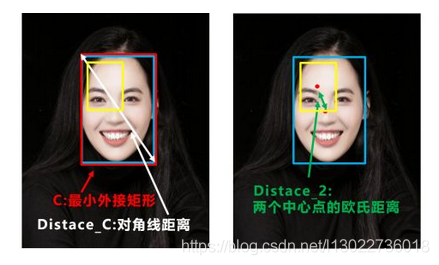
IOU: 预测框和真实框的叫并比
v是衡量长宽比一致性的参数,我们也可以定义为:

代码实现:
iou = bbox_iou(pbox.T, tbox[i], x1y1x2y2=False, CIoU=True) # iou(prediction, target)
lbox += (1.0 - iou).mean() # iou loss
def bbox_iou(box1, box2, x1y1x2y2=True, GIoU=False, DIoU=False, CIoU=False, eps=1e-9):
# Returns the IoU of box1 to box2. box1 is 4, box2 is nx4
box2 = box2.T
# Get the coordinates of bounding boxes
if x1y1x2y2: # x1, y1, x2, y2 = box1
b1_x1, b1_y1, b1_x2, b1_y2 = box1[0], box1[1], box1[2], box1[3]
b2_x1, b2_y1, b2_x2, b2_y2 = box2[0], box2[1], box2[2], box2[3]
else: # transform from xywh to xyxy
b1_x1, b1_x2 = box1[0] - box1[2] / 2, box1[0] + box1[2] / 2
b1_y1, b1_y2 = box1[1] - box1[3] / 2, box1[1] + box1[3] / 2
b2_x1, b2_x2 = box2[0] - box2[2] / 2, box2[0] + box2[2] / 2
b2_y1, b2_y2 = box2[1] - box2[3] / 2, box2[1] + box2[3] / 2
# Intersection area
inter = (torch.min(b1_x2, b2_x2) - torch.max(b1_x1, b2_x1)).clamp(0) * \
(torch.min(b1_y2, b2_y2) - torch.max(b1_y1, b2_y1)).clamp(0)
# Union Area
w1, h1 = b1_x2 - b1_x1, b1_y2 - b1_y1 + eps
w2, h2 = b2_x2 - b2_x1, b2_y2 - b2_y1 + eps
union = w1 * h1 + w2 * h2 - inter + eps
iou = inter / union
if GIoU or DIoU or CIoU:
cw = torch.max(b1_x2, b2_x2) - torch.min(b1_x1, b2_x1) # convex (smallest enclosing box) width
ch = torch.max(b1_y2, b2_y2) - torch.min(b1_y1, b2_y1) # convex height
if CIoU or DIoU: # Distance or Complete IoU https://arxiv.org/abs/1911.08287v1
c2 = cw ** 2 + ch ** 2 + eps # convex diagonal squared
rho2 = ((b2_x1 + b2_x2 - b1_x1 - b1_x2) ** 2 +
(b2_y1 + b2_y2 - b1_y1 - b1_y2) ** 2) / 4 # center distance squared
if DIoU:
return iou - rho2 / c2 # DIoU
elif CIoU: # https://github.com/Zzh-tju/DIoU-SSD-pytorch/blob/master/utils/box/box_utils.py#L47
v = (4 / math.pi ** 2) * torch.pow(torch.atan(w2 / h2) - torch.atan(w1 / h1), 2)
with torch.no_grad():
alpha = v / ((1 + eps) - iou + v)
return iou - (rho2 / c2 + v * alpha) # CIoU
else: # GIoU https://arxiv.org/pdf/1902.09630.pdf
c_area = cw * ch + eps # convex area
return iou - (c_area - union) / c_area # GIoU
else:
return iou # IoU
2、置信度损失和类损失
yolov5代码用nn.BCEWithLogitsLoss或FocalLoss评价目标框和预测框的类损失和置信度损失,本节一一介绍这两个损失函数。
- nn.BCEWithLogitsLoss:
首先对预测输出作sigmoid变换,然后求变换后的结果与真实值的二值交叉熵.
假设预测输出是3分类,预测输出:
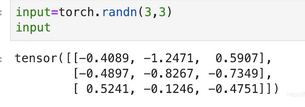
预测输出sigmoid变换:
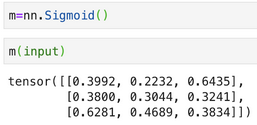
假设真实输出是:

两者的二值交叉熵的计算方法:
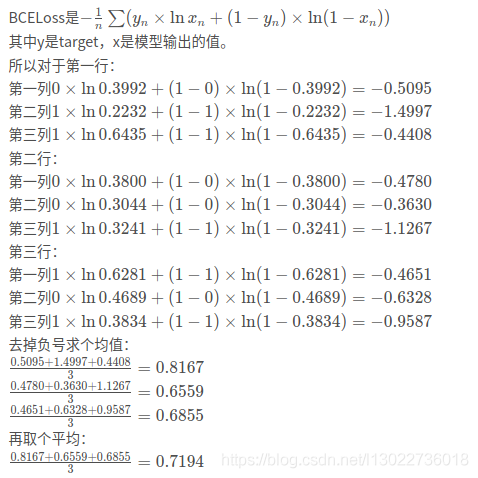
接口函数验证下上面的结果:
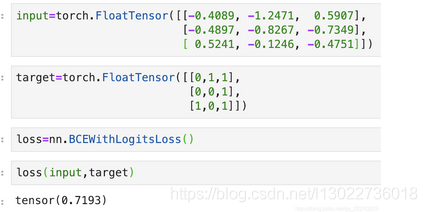
- FocalLoss损失:
FocalLoss损失考虑的是:目标检测中正负样本严重不均衡的一种策略。该损失函数的设计思想类似于boosting,降低容易分类的样本对损失函数的影响,注重较难分类的样本的训练.
简而言之,FocalLoss更加关注的是比较难分的样本,何谓难分?若某一个真实类预测的概率只有0.2,我们认为它比较难分,相反若该真实类的预测概率是0.95,则容易分类.
FocalLoss通过提高难分类别的损失函数来实现,公式如下:

图像如下:
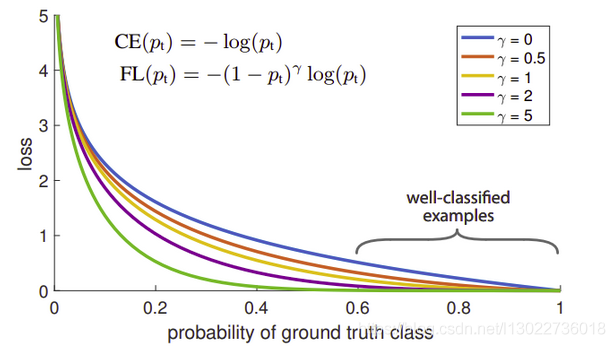
可以看出预测真实类概率越大,则损失函数越小,即实现了之前的想法.
为了能够平衡正负样本的重要性,我们可以给各个类别添加一个权重常数 α ,比如想使正样本初始权重为0.8,负样本就为0.2.
代码实现为:
class FocalLoss(nn.Module):
# Wraps focal loss around existing loss_fcn(), i.e. criteria = FocalLoss(nn.BCEWithLogitsLoss(), gamma=1.5)
def __init__(self, loss_fcn, gamma=1.5, alpha=0.25):
super(FocalLoss, self).__init__()
self.loss_fcn = loss_fcn # must be nn.BCEWithLogitsLoss()
self.gamma = gamma
self.alpha = alpha
self.reduction = loss_fcn.reduction
self.loss_fcn.reduction = 'none' # required to apply FL to each element
def forward(self, pred, true):
loss = self.loss_fcn(pred, true)
# p_t = torch.exp(-loss)
# loss *= self.alpha * (1.000001 - p_t) ** self.gamma # non-zero power for gradient stability
# TF implementation https://github.com/tensorflow/addons/blob/v0.7.1/tensorflow_addons/losses/focal_loss.py
pred_prob = torch.sigmoid(pred) # prob from logits
p_t = true * pred_prob + (1 - true) * (1 - pred_prob)
alpha_factor = true * self.alpha + (1 - true) * (1 - self.alpha)
modulating_factor = (1.0 - p_t) ** self.gamma
loss *= alpha_factor * modulating_factor
if self.reduction == 'mean':
return loss.mean()
elif self.reduction == 'sum':
return loss.sum()
else: # 'none'
return loss
其中成员函数loss_fcn为nn.BCEWithLogitsLoss。
总结
到此这篇关于YOLOV5代码详解之损失函数计算的文章就介绍到这了,更多相关YOLOV5损失函数计算内容请搜索我们以前的文章或继续浏览下面的相关文章希望大家以后多多支持我们!

